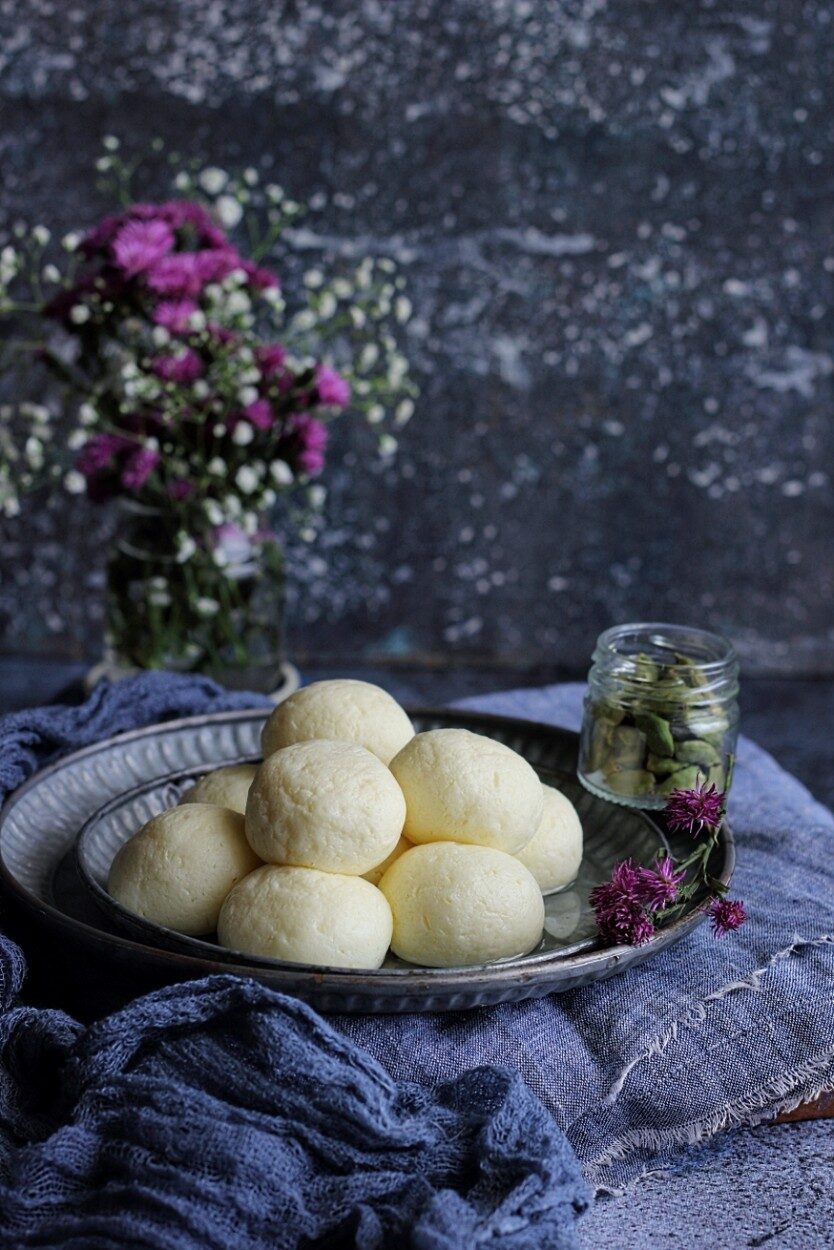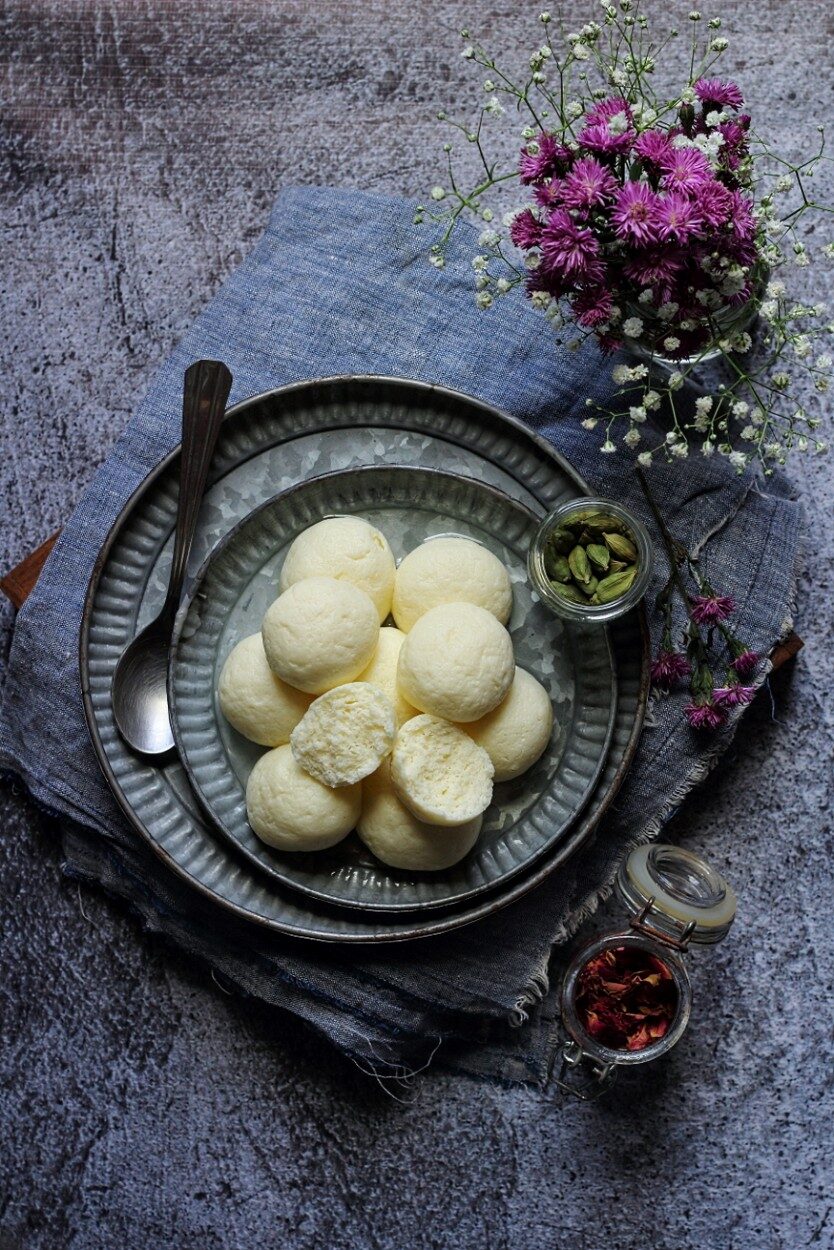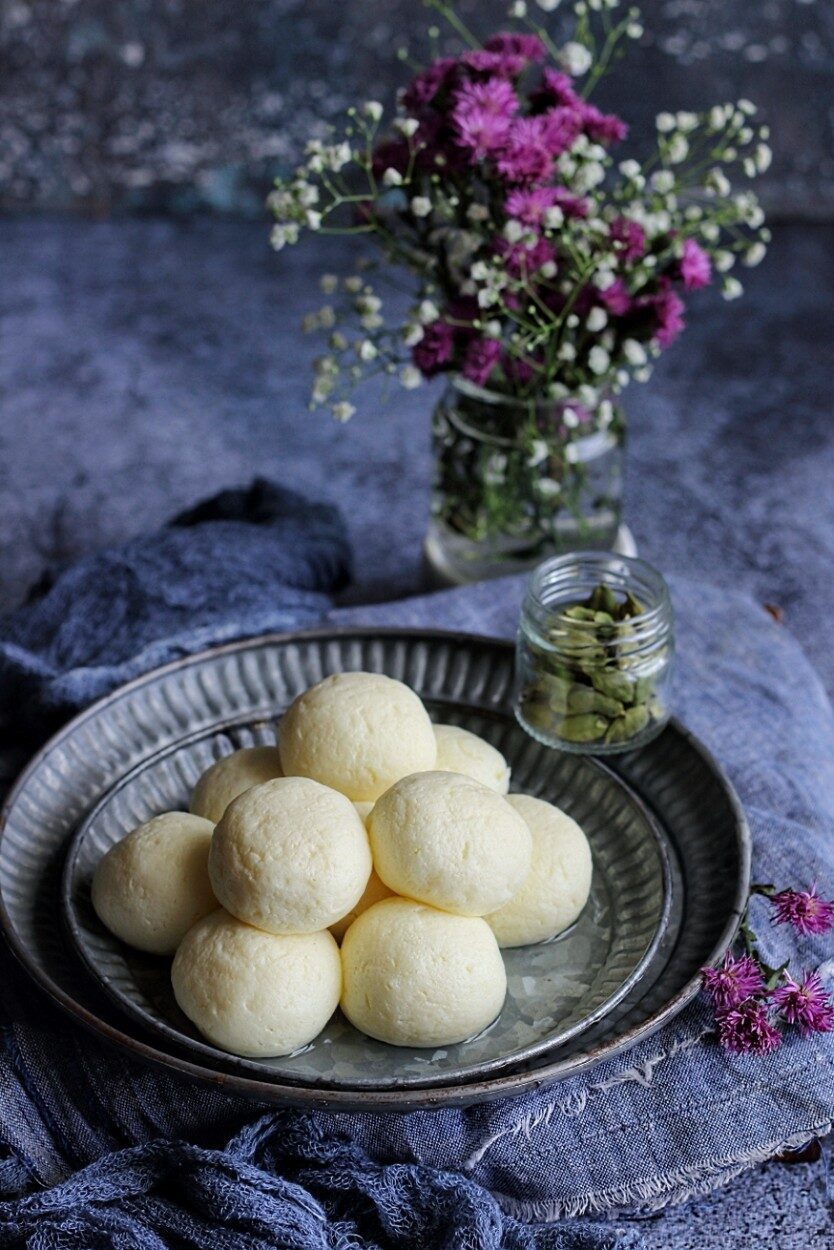 Soft and spongy, drenched in sugar syrup; Khirmohan for an Oriya, Rôshogolla for a Bengali, Rasgulla for a Punjabi (and other north Indians) – this mouth watering Indian dessert can be eaten by dozens!! Yes, I said dozens because you can have this dish guilt free since it is low on calories (more so if you squeeze out the sugar syrup).
Soft and spongy, drenched in sugar syrup; Khirmohan for an Oriya, Rôshogolla for a Bengali, Rasgulla for a Punjabi (and other north Indians) – this mouth watering Indian dessert can be eaten by dozens!! Yes, I said dozens because you can have this dish guilt free since it is low on calories (more so if you squeeze out the sugar syrup). Made from cottage cheese balls, cooked in syrup of sugar, traditionally Rasgullas were served at room temperature but these days they are served chilled. In northern India, the dish comes flavoured in saffron, rosewater, and sometimes garnished with chopped pistachios.
What better way to celebrate Durga Puja! Though it is the state of Bengal and the Bengalis who are commonly associated and credited with this sweet, the fact is that the origin of this dish lies in the city of Salepur in the state of Orissa. Surprised! Aren’t you? It was during the British rein that this dish found its way to the state of Bengal.
Though simple as it sounds – cheese balls cooked in sugar syrup – it took me a few trials and errors before I could understand the nuances of technique and dish out soft and spongy rasgullas. The first attempt was such a disaster that the balls were hard enough to play cricket with!!

There are a couple of things that need to be kept in mind so as to dish out soft and spongy rasgullas:
- The excess water should be drained well from the cheese
- At the same time you need to ensure that you do not over squeeze the cheese either since that will leave the cheese dry and the balls will not swell or become spongy when boiled. The chhena/ cheese needs to be moist and not wet.
Keeping the consistency of cheese perfect is actually the key in creating this dish.
You will need the following –
Bowl of Ice
1 litre Cow Milk
2 tbsp Lemon Juice mixed in two table spoons of water
1 tsp Maida (all purpose flour), optional
1.5 litres of Water
400 grams Sugar
1 tbsp Milk or Lemon Juice
A pinch Saffron (optional)
5 pods Cardamom or 1/2 tsp ground Cardamom (optional)

Line a large fine mesh sieve with a cheesecloth or muslin cloth. Set aside.
Boil the milk by continuously stirring it to prevent formation of malai (creamy layer) on top. Once the milk comes to a boil, switch off the heat.
Keep stirring it for two more minutes and then gradually add the lemon juice mixed in water.
Keep stirring for 15 to 20 seconds and wait for the curds to separate. If they don’t, add a little more of the lemon juice mix and again stir.
Once the milk curdles, pour the contents over the sieve lined with cheesecloth. Try and remove excess water but do not over do the process as the cheese will dry out.
Tie the ends of the muslin cloth and hang it for 20 – 30 minutes. Squeeze to extract any water that still may be there.
In a large wide pot (to ensure that the cheese balls have enough space to cook in the water) boil the water with sugar. Add a tablespoon of lemon juice or milk to get rid of any scum/ impurities. The scum will rise to the surface which can be removed with a spoon. Add aromatics at this point if you wish to.
While the water is coming to a boil, remove the cheese on to a plate, mash it with the base of your palm. Mash it well so that the cheese is not longer grainy.

The process can take anywhere between three/ four minutes and even upto seven to twelve minutes! The amount of time that you need to mash the cheese will depend on the quality of milk from which cheese has been procured. (The best way to know when to stop mashing is…as soon as your hands begin to turn greasy i.e. the cheese will start releasing the fat, you need not knead any further)
If you wish, you may add corn flour or arrowroot or maida to the cheese at this stage and mix it in. I never use it and my rasgulla turns up perfect.
Start making small balls (since they will triple in their size when boiled) with the cottage cheese by gently pressing the cheese between your palms. I almost always make ten balls from it.
Gently add these balls to the boiling water. Ensure that water is on a rolling boil. Cover the pan with a lid and let the balls cook on medium heat.
The balls need to be on a rolling boil, all the while that they are cooking. Cook for approximately twelve to fifteen minutes, depending on the size of the balls.
Once done, remove the container of rasgullas from fire and immediately transfer the rasgulla to the bowl of ice along with some of the syrup. This will help keep the rasgulla soft and spongy. Once they cool down, transfer them back to the syrup. Cool completely and chill them in fridge before serving. You may serve warm, at room temperature or chilled.
Makes 8-12 Rasgullas (depending on the quality of milk used and the size of rasgullas you made, the amount will fall anywhere between 8 – 12)

Thanks for visiting and see you soon again!


Those look awesome. I’ve yet to cook with saffron.
I haven’t had rasgulla for ages! And definitely haven’t made it. Looks wonderful. Happy Durga Puja!
Thank you so much Katherine!
I dream the day i can make these.
@Jesica, it is a bit tricky to make but once you get the hang of it, you would want to make them often coz they are so healthy and yummy!!
Wow they look awesome, but not sure about making the cottage cheese. I mean I could do it but can one use store bought cottage cheese and pass it in the food processor. Just curious. Love the touch of saffron.
I am afraid that won’t work. I tried store bought cottage cheese but it does not have that quality of the cheese which is required for making this dish. Store bought cottage cheese is made at high temperature which does not work for this dish.
Very very educational! I’ve never tried these cottage cheese dumplings before, but it sounds like the taste is amazing! Thanks for introducing and sharing the new food!
Thanks Nami! They are certainly worth trying and worth the effort! 🙂
my son loves rasgollas.. your recipe looks promising.. will try & let u know.
Very interesting! I have never heard of cottage cheese dumplings before but they sound tasty. Thanks for sharing!
This is the best part of food blogging…one gets introduced to a variety of cuisines and foods 🙂
Will I sprinkle the hot water or cold water, let me know please ¡
Hello Mukta, you need to sprinkle regular water…neither cold nor hot.
Tried ths recipe for these lockdown days.. As the ingredients are minimum!! And followed every measurement n timings..!!
yummmmy… The rasgullas came out just perfect!!
Thank you so much Taruna n thnk u EFS!! Lots of love!!
Thank you so much for your feedback. It means a lot. And so happy that you enjoyed the rasgullas. Love & Hugs 🙂 <3